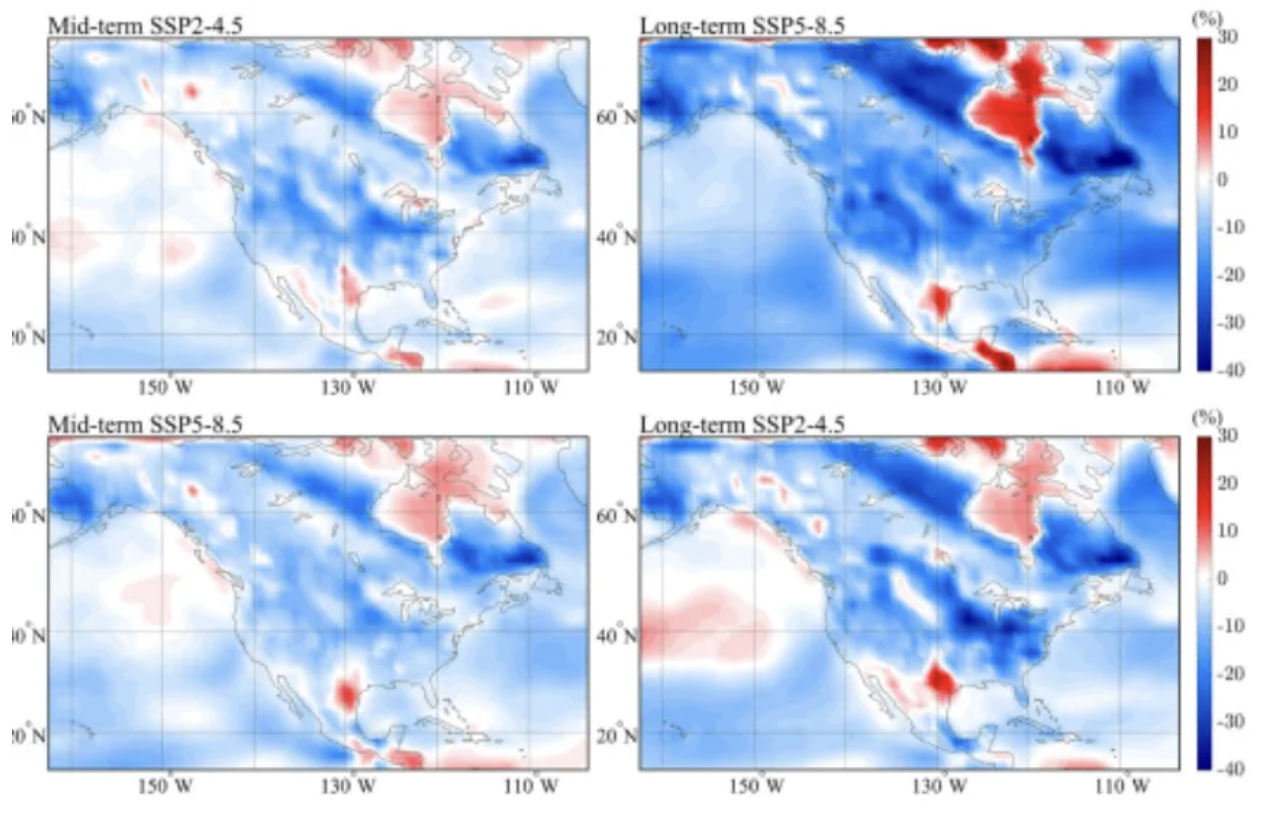Exploring where the biggest opportunities and risks will be as Canada expands offshore wind

Recent legislation has opened the door for expanded offshore wind development off Canada’s east coast. The new law will create a joint regulatory framework between the Nova Scotia and Newfoundland and Labrador governments leading to increased authorization for wind projects off of both provinces. While this is an excellent step toward the country’s net zero and energy security ambitions, the effects of climate change should be considered for all new projects to ensure the full expected benefits are realized.
An initial view into historical wind data off the country’s east coast shows very promising results. According to Global Wind Atlas, both Nova Scotia and Newfoundland and Labrador have had very strong wind resources.
However, reviewing historical data alone does not give an accurate glimpse into future productivity of offshore wind projects, which have lifetimes of 20-25 years. These two regions appear to be on a diverging paths going forward, according to global climate models (Martinez).

Figure 1. Evolution of the mean wind power density in North America.
As the image above displays, by the end of a project life cycle (which is about the same time horizon as the mid-term climate models), mean wind power density in Newfoundland and Labrador is expected to decrease significantly while mean wind power density in Nova Scotia is expected to stay relatively constant or even slightly increase.
Now, this insight should not serve to completely discourage wind investment off of Newfoundland and Labrador’s coast, because this region will still be highly productive and can contribute to Canada’s decarbonization and energy goals. However, without accounting for these changes in wind speeds, each projects’ development, financing, and operating decisions will not be optimized for actual conditions leading to underperformance.
Unfortunately, existing climate models alone are not sufficient for use to inform such decisions. Existing climate models are able to provide macro-level insights, but the coarse resolution (~50km grid cells) and model bias present make the data difficult to use when performing analysis on any individual site.
Sust Global is solving this problem by using its Geospatial AI approach to create high-resolution and bias-free wind data and energy generation projections for individual assets. These outputs can help infrastructure investors make climate-informed and data-driven decisions when developing, financing, and operating wind assets.
As investors in Canada and the rest of the world deploy capital to wind projects, it’s important that they recognize that climate change will alter historical patterns of wind resources. Without accounting for these changes, these investors risk underperformance and making decisions that don’t optimize assets for expected conditions. Additionally, failing to incorporate forward-looking wind data into processes will cause investors to miss out on attractive investment opportunities in areas where wind speeds will increase, as this research suggests will occur in the area around Hudson Bay.
Citations:
Martinez, A. and Iglesias, G. (2022). Climate change impacts on wind energy resources in North America based on the CMIP6 projections. Science of The Total Environment, 806, p.150580. https://www.sciencedirect.com/science/article/pii/S0048969721056576.